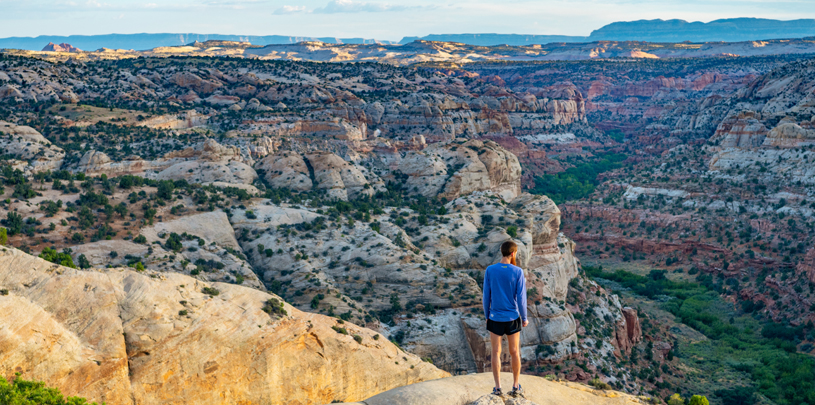
 by Mike Popejoy, Utah Public Lands Director
by Mike Popejoy, Utah Public Lands Director
Grand Staircase-Escalante National Monument’s landscapes are among the most magnificent in the world, from the geologic steps from which it derives its name to its exquisite rivers, creeks, and springs — oases in the dry but tenacious desert. These landscapes deserve to be stewarded responsibly. The federal Bureau of Land Management (BLM) is currently seeking ideas from the public about how best to manage the southern Utah monument. Without a good management plan, the national monument could be clearcut, overgrazed, or otherwise degraded. It’s time to speak up for Grand Staircase-Escalante.
We encourage you to submit specific comments about what’s most important to you in the monument. What specific things do you think monument managers should do, and why? Below are some of our top priorities for changes we’d like to see in the new management plan. Please help us advance these management proposals in your comments while sharing your own reasons for why they are important.
Protecting old-growth forests and the wildlife habitat they provide is paramount. Past clearcutting of pinyon and juniper forests has destroyed centuries-old trees. This makes the preservation of remaining old-growth even more important.

Three bird species with potential habitat in the monument are currently facing serious challenges — Mexican spotted owls and Southwestern willow flycatchers (both listed under the Endangered Species Act), and pinyon jays. Cattle grazing, destruction of pinyon and juniper forests, and recreation can all degrade habitat for these birds.

In the late 1990s, the Grand Canyon Trust helped make it possible for ranchers who wanted out of the ranching business to get paid to retire their permits to graze livestock in the monument. This helped protect sensitive desert lands and vital water sources from the mouths and hooves of cattle. Unfortunately, many of these areas were reopened to grazing in the management plan developed during the last administration.
Plant communities that thrive at the bottoms of canyons are identified as a “monument object” to be protected in the proclamations establishing Grand Staircase-Escalante National Monument. We have regularly observed significant damage to plants and streambanks caused by confined cattle grazing in narrow canyons.

Cattle grazing is permitted on the vast majority of the monument, affecting everything from wildflowers and their pollinators to precious water sources. The best available science shows that permitting cows to eat only 30 percent of the vegetation (called "30 percent utilization”) is better for the health of the land and for the economics of grazing.
The BLM should adopt protections for cultural sites and expand what it considers a cultural site beyond the Western definition of archaeological sites to include important landscape components as defined by tribal nations, for example, culturally significant plants, waters, and gathering places. Cattle grazing damages cultural sites, including springs.

Big Bowns Bench is a rare area in the monument where thriving communities of bunchgrass and wildflowers and the bees, butterflies, and other insects that pollinate them stretch across over ten thousand acres and provide food and shelter for nesting birds, bighorn sheep, and more. This is because, under the Trust’s stewardship, Big Bowns Bench has not been grazed by cattle for over two decades. We propose designating Big Bowns Bench as a research natural area to protect its healthy plants and animals and offer researchers a place to study what monument lands look like in their natural state without cattle grazing.
This opportunity to make management proposals to the BLM is the first step in a longer process. After this scoping period, the BLM will prepare a draft environmental impact statement that will compare alternatives, including, we hope, many of our proposals. At that point you’ll have another opportunity to comment.
Make your voice heard on behalf of the monument. Let’s help the management of Grand Staircase-Escalante live up to what this wondrous landscape deserves.
Act now. Submit a comment to the U.S. Bureau of Land Management in your own words.
80% of Arizona voters support Baaj Nwaavjo I'tah Kukveni National Monument, according to a new poll.
Read MoreUtah voters strongly support national monuments in general, and Bears Ears and Grand Staircase-Escalante in particular, a new poll shows.
Read MoreA small victory in the legal case challenging Daneros uranium mine, near Bears Ears National Monument.
Read More